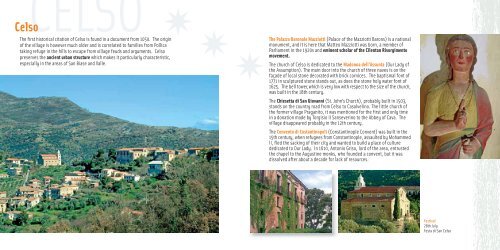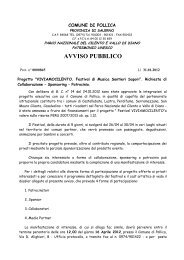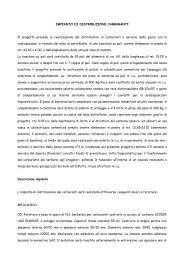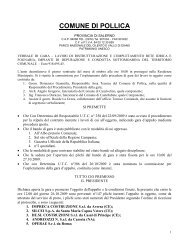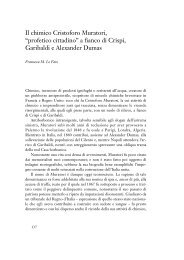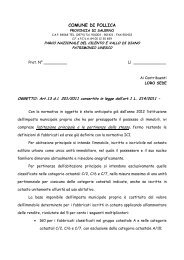Traditions - Comune di Pollica
Traditions - Comune di Pollica
Traditions - Comune di Pollica
You also want an ePaper? Increase the reach of your titles
YUMPU automatically turns print PDFs into web optimized ePapers that Google loves.
CELSO<br />
The first historical citation of Celso is found in a document from 1050. The origin<br />
of the village is however much older and is correlated to families from <strong>Pollica</strong><br />
taking refuge in the hills to escape from village feuds and arguments. Celso<br />
preserves the ancient urban structure which makes it particularly characteristic,<br />
especially in the areas of San Biase and Valle.<br />
Celso<br />
The Palazzo Baronale Mazziotti (Palace of the Mazziotti Barons) is a national<br />
monument, and it is here that Matteo Mazziotti was born, a member of<br />
Parliament in the 1920s and eminent scholar of the Cilentan Risorgimento<br />
movement.<br />
The church of Celso is de<strong>di</strong>cated to the Madonna dell’Assunta (Our Lady of<br />
the Assumption). The main door into the church of three naves is on the<br />
façade of local stone decorated with brick cornices. The baptismal font of<br />
1771 in sculptured stone stands out, as does the stone holy water font of<br />
1625. The bell tower,which is very low with respect to the size of the church,<br />
was built in the 18th century.<br />
The Chiesetta <strong>di</strong> San Giovanni (St. John’s Church), probably built in 1503,<br />
stands on the country road from Celso to Casalvelino. The little church of<br />
the former village Praganito, it was mentioned for the first and only time<br />
in a donation made by Torgisio II Sanseverino to the Abbey of Cava. The<br />
village <strong>di</strong>sappeared probably in the 12th century.<br />
The Convento <strong>di</strong> Costantinopoli (Constantinople Convent) was built in the<br />
15th century, when refugees from Constantinople, assaulted by Mohammed<br />
II, fled the sacking of their city and wanted to build a place of culture<br />
de<strong>di</strong>cated to Our Lady. In 1610, Antonio Griso, lord of the area, entrusted<br />
the chapel to the Augustine monks, who founded a convent, but it was<br />
<strong>di</strong>ssolved after about a decade for lack of resources.<br />
Festival<br />
28th July<br />
Festa <strong>di</strong> San Celso


